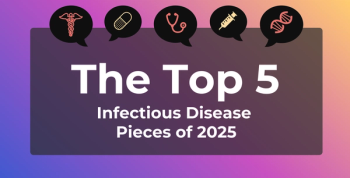
Expert Highlights Need for Greater Diversity in Dermatology Clinical Trials
Valerie M. Harvey, MD, MPH, FAAD, founder of the Hampton Roads Center for Dermatology, highlighted the long-standing underrepresentation of minority populations in dermatology clinical trials at the Skin of Color Update 2024 in New York City on Friday.
Valerie M. Harvey, MD, MPH, FAAD, founder and director of the Hampton Roads Center for Dermatology, opened the Skin of Color Update 2024 in New York City on Friday with a presentation on the underrepresentation of minority populations in
Current State of Diversity in Dermatology Clinical Trials
She began by reporting that there has been little progress made in the last 3 decades to increase the participation of racial and ethnic minority groups in clinical trials. Harvey noted that clinical trial representation is important because it contributes to a more comprehensive data set, restores the trust of potential participants in those conducting studies, and expands access to safe, effective interventions.
More specifically, she mentioned that a recent review
Also, Harvey noted that the review demonstrated how representation varies by disease. For example, only 30% of US-based psoriasis studies had more than 20% racially or ethnically diverse research participants compared with 73.9% and 91.7% of acne and atopic dermatitis RCTs, respectively.
Consequently, Harvey listed various efforts by the Skin of Color Society (SOCS) to increase diverse clinical trial enrollment. This included the Diversity in Dermatology Clinical Trials Task Force, which hosted several meetings to discuss relevant action items, like establishing more diversity among clinical trial staff and setting clear definitions of race population descriptors.
Another effort Harvey highlighted was the Diversity Clinical Research Mentoring Program, which was codeveloped by the SOCS and the dermatology section of the National Medical Association. The program consists of 3 phases: foundations and principles of clinical trials course, in-person mentor training, and 18 months of intensive training. She noted the program's goals are to help train the next generation of principal investigators.
Harvey concluded by listing ways those in different health care industry sectors can help increase clinical trial diversity.
“Industry, make sure that you partner with communities from the beginning during the design part of the studies, selecting sites in diverse communities, ensuring that your investigators are diverse, and making sure that everything that you do is inclusive,” she said.“Clinicians, what we can do is just get involved. Be knowledgeable about clinical trials, educate your patients, and build trust.”
Clinical Trial Diversity Issues in Other Areas
Dermatology is not the only area struggling with clinical trial diversity. Another disease state where this issue persists is prostate cancer. Deaths from prostate cancer among Black men
However, a meta-analysis
To help combat this issue, the American Cancer Society (ACS) recently announced a collaboration with Trial Library and the Prostate Cancer Clinical Trials Consortium to accelerate the recruitment of Black men with prostate cancer in clinical trials.2 ACS said it would provide eligible practice-based applicants with up to $200,000 in direct costs per year for 2 years to help build the infrastructure needed to increase clinical trial enrollment.
Clinical trial diversity is also an issue within the diabetes space. The American Diabetes Association (ADA) recently
Despite this, the FDA’s 2015 to 2017 Drug Trials Snapshot Summary Reports
In response, Janet Brown-Friday, RN, MSN, MPH, ADA president of health care and education,
Brown-Friday listed barriers to clinical trial diversity, including mistrust and a lack of access. Changes she suggested to increase diversity included minimizing participant costs and implementing a diverse clinical staff.
"Participating in a clinical trial should not be a financial burden," Brown-Friday said. "Use study resources to minimize costs for participants. If transportation to the study site is an issue, pay for it."
Diversity Efforts in the Works
These examples are only a glimpse of the broader impact the lack of diverse clinical trials has on the health care industry. Overall, 75% of the 32,000 participants in the trials of 53 novel drugs approved by the FDA in 2020 were White despite racial and ethnic minorities making up 40% of the US population.
Consequently, Harvey
Lastly, she suggested engaging with targeted communities early on to help shape the trial based on their concerns.
“When we’re designing these studies, when we’re asking these research questions, it’s really important to engage the community from the outset to really get a sense of what their priorities are, what their concerns are, so that we can build that into the study design,” Harvey said. “I think that is so important to get meaningful diversity and so that we can really translate what we learn from these clinical trials into practice.”
References
- Charrow A, Xia FD, Joyce C, Mostaghimi A. Diversity in dermatology clinical trials: a systematic review. JAMA Dermatol. 2017;153(2):193-198. doi:10.1001/jamadermatol.2016.4129
- American Cancer Society, Trial Library, and Prostate Cancer Clinical Trials Consortium collaborate to support recruitment of Black patients for clinical trials. American Cancer Society. July 11, 2024. Accessed September 16, 2024.
https://pressroom.cancer.org/releases?item=1340#:~:text=ACS%20is%20committed%20to%20enhancing,efforts%20for%20clinical%20trial%20enrollment. - Riaz IB, Islam M, Ikram W, et al. Disparities in the inclusion of racial and ethnic minority groups and older adults in prostate cancer clinical trials: a meta-analysis. JAMA Oncol. 2023;9(2):180-187. doi:10.1001/jamaoncol.2022.5511
- Whitaker S. Promoting clinical trial diversity for racial and ethnic minority populations living with diabetes. FDA. February 15, 2022. Accessed September 16, 2024.
https://www.fda.gov/media/163019/download - Improving equity and access to health care: how nontraditional organizations can help increase clinical trial diversity. ADA. Accessed September 16, 2024.
https://professional.diabetes.org/sites/default/files/media/6962_ada_walmart_clinical_trial_diversity_white_paper_design_rev1.pdf - ADA President of Health Care & Education calls for improved diversity in clinical trials. ADA Meeting News. June 25, 2023. Accessed September 16, 2024.
https://www.adameetingnews.org/ada-president-of-health-care-education-calls-for-improved-diversity-in-clinical-trials/ - McCormick B. Experts highlight new dermatological treatments, importance of clinical trial diversity. AJMC®. September 13, 2024. Accessed September 16, 2024.
https://www.ajmc.com/view/experts-highlight-new-dermatological-treatments-importance-of-clinical-trial-diversity
Newsletter
Stay ahead of policy, cost, and value—subscribe to AJMC for expert insights at the intersection of clinical care and health economics.








































